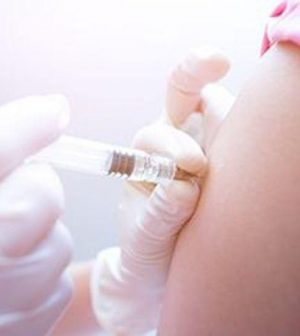- Navigating Your Midlife Crisis: Embracing New Possibilities
- City Raccoons Showing Signs of Domestication
- Mapping the Exposome: Science Broadens Focus to Environmental Disease Triggers
- One Week Less on Social Media Linked to Better Mental Health
- Your Brain Changes in Stages as You Age, Study Finds
- Some Suicide Victims Show No Typical Warning Signs, Study Finds
- ByHeart Formula Faces Lawsuits After Babies Sickened With Botulism
- Switch to Vegan Diet Could Cut Your Greenhouse Gas Emissions in Half
- Regular Bedtime Does Wonders for Blood Pressure
- Dining Alone Could Mean Worse Nutrition for Seniors
HPV Vaccination Rises in States That Don’t Require Parental Consent

WEDNESDAY, Nov. 17, 2021 (HealthDay News) – When young people are allowed to give their own consent for human papillomavirus (HPV) vaccines, vaccination rates are higher, new research shows.
The new study suggests that allowing teens to consent without parental involvement could be an important strategy for boosting HPV vaccination rates. This consent is already a policy in several U.S. states.
While researchers can’t say definitively if these laws drive higher vaccination rates, it’s worth considering what impact they might have if widely adopted, said senior study author Dr. Sangini Sheth. She is associate professor of obstetrics, gynecology and reproductive sciences at Yale University in New Haven, Conn.
“It’s certainly food for thought,” Sheth said in a university news release. “I think it could lead to some very interesting policy conversations.”
For the study, Yale researchers analyzed U.S. vaccination data from 2015 to 2018, comparing rates in places with differing laws. The data included nearly 81,900 teens (aged 13 to 17).
In places where teens are allowed to consent to the HPV vaccines, nearly 68% had received at least the first dose. In states without those laws, just over 61% had been vaccinated, the findings showed.
The HPV vaccine is highly effective at preventing cervical cancer if it is given before girls or women have been exposed to the virus. It is recommended for boys and girls between 11 and 12 years of age. But only 54% of adolescents in the United States are fully vaccinated for HPV, lower than for vaccines preventing meningitis, tetanus, diphtheria and whooping cough.
Along with the HPV vaccine, the U.S. Centers for Disease Control and Prevention recommends that adolescents get the Tdap vaccine (which protects against tetanus, diphtheria and pertussis), and more than 90% have done so. The CDC also recommends a meningitis vaccine and nearly 89% of teens have had that shot.
Sheth said one reason HPV vaccination rates lag is because the HPV vaccine is often approached differently. The virus is spread through intimate contact.
“Whether parents think that the HPV vaccine is somewhat optional, that their children can wait and get it at some later point, or that it’s not for all children — none of that is true,” she said. “And sometimes the HPV vaccine is not discussed at all.”
Teens can receive the vaccination without parental consent in Alabama, Alaska, California, Delaware, Idaho, New York, Oregon, South Carolina and Washington, D.C. Most of the laws allow teens to consent for care regarding sexual health and reproduction. Some allow them to consent to care more broadly.
The study found a link between the laws and higher rates of the first HPV shot, but a smaller link between the laws and finishing the vaccine series. The HPV series is two or three doses, depending on age at first dose.
“It makes sense that the ability to consent seems to be more associated with starting the vaccine series,” Sheth said. “When it comes to that initial decision, an adolescent being able to make the decision for themselves might make a difference.”
Systems for sending reminders to the teen or their family and to the clinician may be helpful, she suggested.
“What needs to be studied more is the effect of having a pro-vaccine culture within a practice, where everyone owns that vaccine messaging, from the waiting room and front desk staff to the nurses and clinicians,” Sheth added.
The findings were published online Nov. 15 in JAMA Pediatrics.
More information
The U.S. Centers for Disease Control and Prevention has more on human papillomavirus.
SOURCE: Yale University, news release, Nov. 15, 2021
Source: HealthDay
Copyright © 2025 HealthDay. All rights reserved.










